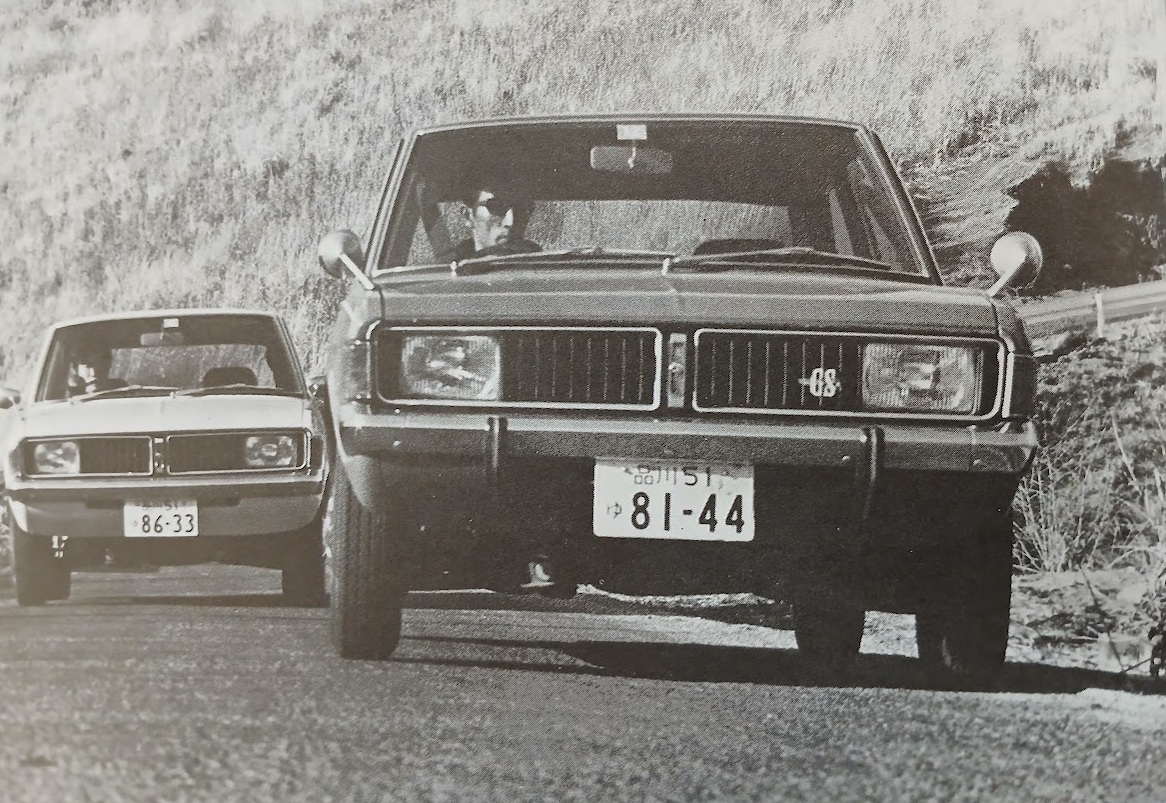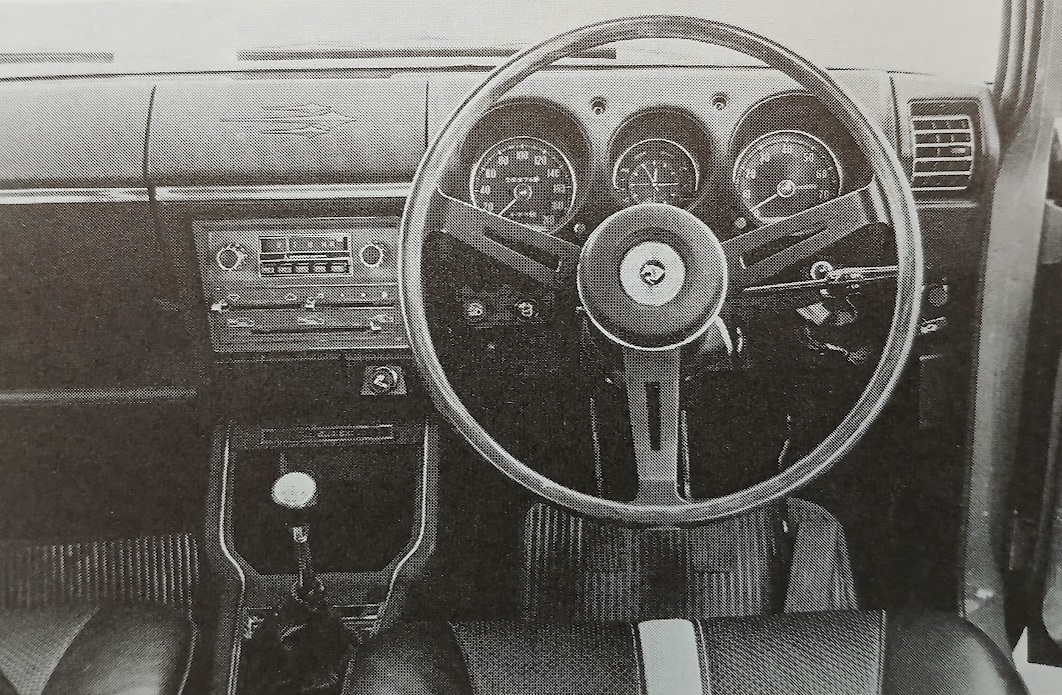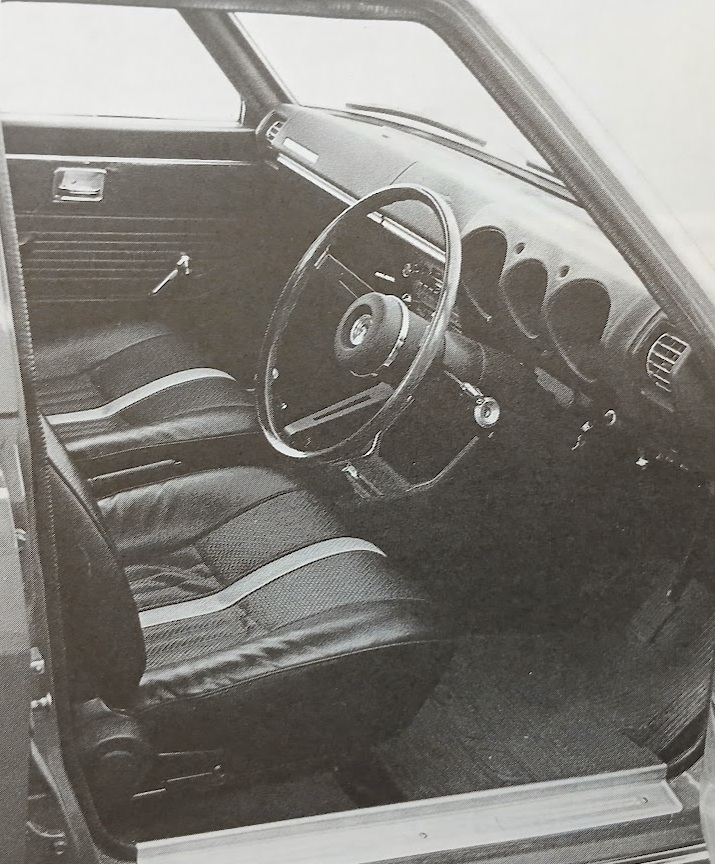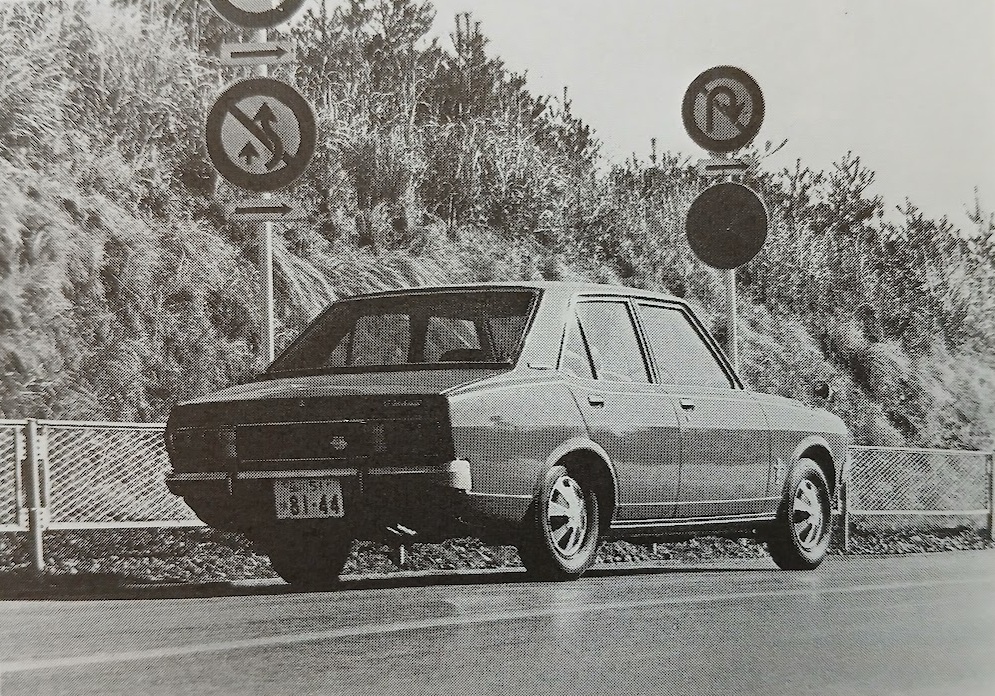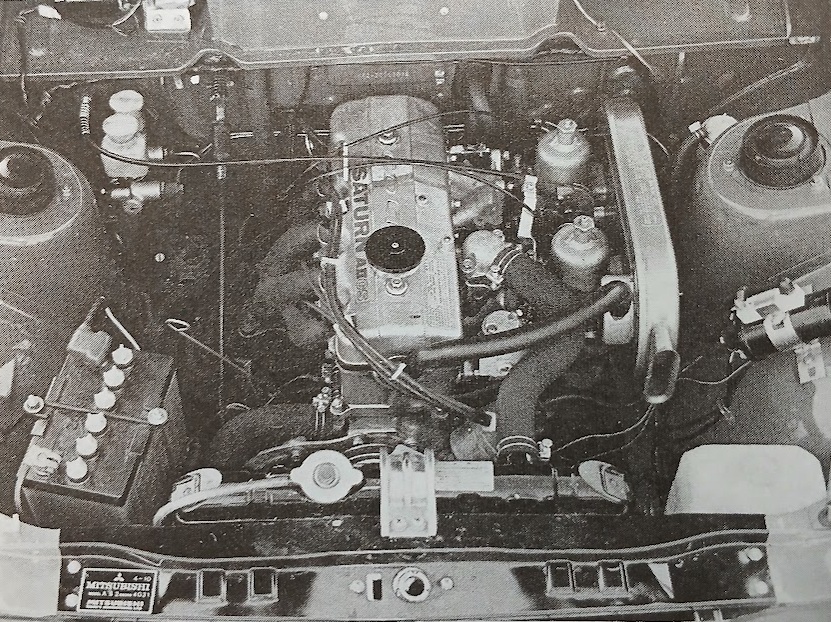Mitsubishi Colt Galant AII GS (1970)
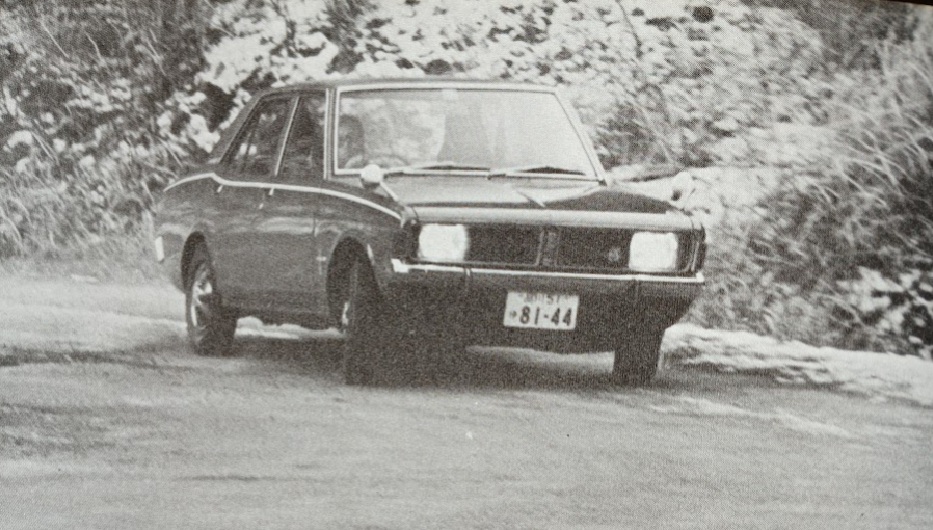
Publication: Car Graphic
Format: Road Test
Date: March 1970
Author: “C/G Test Group” (uncredited)
Summary: High performance version of the Galant, SOHC 1.5-liter engine, revs smoothly up to over 7000rpm, extremely responsive across the entire range, extremely good fuel economy, variable ratio steering with good response, handling generally excellent, but with standard tires it tends to oversteer early, good value for money.
Road testing the Mitsubishi Colt Galant AII GS
The Colt Galant, a strategic model with which Mitsubishi Heavy Industries dared to challenge the 1300-1600cc market, which is the most competitive not only in Japan but also internationally, got off to a good start with 6,400 units sold in December when it was released.
The Galant is available in two models: the AI with a 1.3-liter engine, and the AII with a 1.5-liter engine, sharing a common four-door sedan body. The lineup is further divided into seven variations, with minor differences in specifications. The AII GS (Grand Sport) that we tested is the highest-performance sports sedan model, and is also the most expensive (711,000 yen).
First and foremost, we were deeply impressed by the high standard of performance and overall refined behavior of the GS. Although the catalog data for domestic cars tends to be very optimistic in our experience, the Galant GS achieved nearly all the figures listed in its catalog in our testing. For example, the top speed was an easy 173.1km/h (175km/h in the catalog) over the 1km section at Yatabe, and the 0-400m acceleration time was 17.2 seconds (16.9 seconds in the catalog) with almost a full load aboard. Moreover, the constant speed fuel economy was amazingly good, 19.2km/l at 60km/h and 12.8km/l at 100km/h. Although these figures (other than the fuel economy) do not have much practical meaning, especially when it comes to passenger cars, they can at least be seen as evidence of tightly-controlled manufacturing tolerances in the product, and Mitsubishi’s policy of publishing conservative figures in its catalog is very much appreciated.
The key to the high performance of the GS is undoubtedly its excellent engine, so let us begin by explaining the specifications. The engine of the Galant is a newly developed SOHC unit that is completely different from that in the previous Colt. While using a conventional layout, it has been ingeniously designed in every detail, resulting in extremely high performance (this seems to be a policy that has been followed not only in the engine, but throughout the entire design). The distinctive feature of the Galant’s engine is the highly efficient design of the intake and exhaust system. The SOHC cylinder head, made of aluminum alloy, has a nearly perfectly hemispherical combustion chamber, with large intake and exhaust valves arranged at an angle of about 47 degrees. The intake port is slightly twisted relative to the combustion chamber, which induces a swirl and improves the combustion effect. The bore and stroke dimensions of the 1499cc AII engine feature a long stroke, at 75mm x 86mm, and this ratio was chosen primarily to make the base of the combustion chamber smaller than its depth, creating an ideal dome shape.
Both the power and torque are far above the standards of this class. The standard AII with a compression ratio of 9.0 and a single Stromberg carburetor produces 95ps/6300rpm, while the GS, with a compression ratio of 10.0 and twin SU carburetors, produces 105ps/6700rpm. Torque is also strong, with the standard model producing 13.2kgm/4000rpm and the GS producing 13.4kgm/4800rpm.
The chassis design is quite ordinary, but the latest technology is applied to the details. The body size is about the same as the Bluebird’s, but the AII GS weighs only 855kg, 75kg lighter than the 1600 SSS. The front suspension is the MacPherson strut type, which has become standard for compact cars, and the lower arms are sturdy pressed wishbone types and there is a wide gap between the rubber bushings on the body mounting side, so there is little change in geometry, and you can expect accurate steering and effective blocking of road noise. The rear axle uses two equal-length leaf springs.
The AII’s brakes are common across all models, with a combination of 9" discs and 8" drums (with automatic adjustment), and of course, a dual-system circuit. AII models are fitted with 4J x 13 rims and 6.15-13 low-profile tires.
According to Mitsubishi Heavy Industries, the suspension settings are the same for all Galant models. However, in our experience, there are significant differences between the AII GS we tested for this report and the AI Custom we purchased for long-term testing. The manufacturer explains that this is due to the difference in tires (the GS we tested had Bridgestone Skyway HHT Nylon 4PR tires, while the C/G AI Custom has Yokohama Nylon 4PRs, but at least one other difference is that the GS is 15mm lower in ride height.
The first thing you notice when you get the GS on the road is that the engine revs up to high rpm with amazing smoothness. On the rev counter, 6400-6750rpm is the yellow zone, and 6750-8000rpm is the red zone, but in low gears it can easily rev up to over 7000rpm. From idling at 800rpm to its practical maximum of over 7000rpm, the engine is exceptionally smooth for a four-cylinder, and among Japanese cars, there is not even a six-cylinder that can match it. The output of 105ps is sufficient for a vehicle weighing 855kg, and because of the flat torque characteristics, you can run quietly and quickly in the city without using more than 2500rpm. For the same reason, the engine always responds quickly to the throttle in any gear, but if we had to pinpoint the most useful range, it would be around 3000 to 6500rpm. In particular, the engine’s power output at high speeds above 5000rpm is excellent, far surpassing the single-carburetor AI that we tested at the same time (although as mentioned in the AI test report, it revs very well for a 1300cc practical model).
The engine’s mechanical noise is low, and the cooling fan has a fluid coupling, so fan noise is low as well (the AI’s fan is directly connected, so it spins hard at high speeds and sounds somewhat harsh). However, it is unfortunate that the exhaust system’s resonance is transmitted quite strongly to the cabin, especially around 3500rpm. This corresponds to around 90-100km/h in top gear, which is exactly the range that is usually maintained for long periods of time on the highway.
The gear ratios are set appropriately for the power. The top speed test was conducted by continuously driving at full throttle on the 5.5km test course at Yatabe, measuring maximum speed on the straight 1km section and the average speed for a full lap of the circuit. The GS recorded 173.1km/h on the 1km section under ideal windless conditions. The engine speed was about 6200rpm, 200pm below the yellow zone, and it still felt relatively unstressed. In Japan, this top speed has little practical meaning, but in foreign markets where the Galant will soon be released, it is common to drive flat-out for hours on end. Our impression is that the GS’s practical high-speed cruising speed is high, and it should be able to maintain 160km/h for a long time. The speedometer of our test car was rather pessimistic. For example, it indicated 100km/h when the actual speed was 104km/h, and 160km/h at an actual 167km/h, so drivers should be careful at high speeds.
The appropriate gear ratio spacing of the 4-speed gearbox was especially evident during acceleration tests. When we accelerated up to 7000rpm and shifted up, the engine speed dropped to about 5000rpm (maximum torque is at 4800rpm), positioning it ideally for full acceleration in the next gear. If you push the engine up to 6750rpm, where the red zone begins, the car will reach about 140km/h in third gear, making it a perfect gear for quick overtaking, especially on the highway.
To demonstrate the power reserve, the top gear overtaking acceleration data shows that the 40-80km/h, 60-100km/h, and 80-120km/h times are 9.7 seconds, 9.4 seconds, and 10.7 seconds, respectively. These times are surprisingly close to those of the Corona Mark II GSS, which has a much better power-to-weight ratio (7.5kg/ps, compared to the GS’s 8.1kg/ps).
The gearshift has a good feel, and operation of the lever is light and precise. The third gear synchro on the test car was weak, and the driveshaft vibrated abnormally above 5000rpm, which was annoying. However, the C/G AI Custom and other Galants we have tested previously had no such problems, and the synchro was very strong, so we believe this was a problem caused by extremely harsh treatment of the test vehicle (which already had a mileage of over 6,500km).
The clutch is light with an appropriate stroke, and even when released abruptly from high revolutions, as in the acceleration tests or the high-speed test, there is very little slip and it engages smoothly.
In short, despite its high performance, the Galant AII GS is very easy to drive, even for complete novices driving around town for the first time.
One morning during testing, the outside temperature was -6°C, and we had to crank the starter a couple of times to get the engine to start. However, because the intake manifold is pre-heated with hot water, it warms up extremely quickly. After starting, we let the engine warm up for about a minute, released the choke, and pulled away, and it immediately began to run smoothly (although it took 12 to 13 minutes for the water temperature needle to reach the normal reading).
As mentioned before, another pleasant surprise about the GS was that the high performance was combined with extremely good fuel economy. For example, the constant speed fuel economy (recorded by driving at a steady speed for 1km) was 20.8km/l at 40km/h in top gear, and 16.6km/l at 80km/h, which are quite incredible results, even better than the C/G AI Custom that was tested at the same time (the AI recorded 17.8km/l and 14.7km/l at the same speeds). The possible reasons for this are that the AII has higher gearing and that the C/G AI has only been driven 2,000km, while the AII’s engine was well run-in at 6,500km, so friction in each part is likely to be low. However, in actual driving conditions where acceleration and deceleration are frequent, the fuel economy is not as good as it is at a constant speed, and the AI is more economical. The average fuel economy over a test distance of about 440km (including about 200km at the Yatabe test course) driven under exactly the same conditions was 9.2km/l for the AI, and 8.2km/l for the AII GS. The fuel tank is 45 liters, so at 100km/h on the highway, you can go at least 500km without refueling. In short, the AII GS is extremely economical with fuel considering its high performance.
The GS’s brakes are adequate for the performance of the car. A brake force of 0.95g was obtained with 35kg of pedal pressure, so pedal force is normal and a servo was not missed. There was little nose dive. In the 0-100-0 fade test, the pedal pressure increased from 20kg on the first stop to 27kg on the seventh, and the braking effect became a little rough, but even on the tenth stop the pedal pressure was still a reasonable 30kg, so it can be said that the brakes have adequate fade resistance. The relative position of the brake and throttle pedals is suitable for heel-and-toeing.
The handling is at quite a high level, despite the ordinary suspension. The variable ratio (15.6:1 when going straight, 18.2:1 when approaching full lock) ball-and-nut steering has a soft and natural feel, with moderate weight. The GS’s response is much sharper than the AI’s, but it is not particularly sensitive. The steering gear ratio is the same, so the difference is mainly due to the tires. The tires on the test car, Bridgestone Skyway Hs, are quite stiff and feel highly rigid laterally, even though they are four-ply (4PR). The steering is very light at normal speeds, and the car follows the steering obediently. Roll angles are unusually small for a relatively tall car. However, the absolute adhesion of this tire is not good, and the rear wheels break traction unexpectedly early, leading to oversteer. At first, this trait is a little surprising because the small roll angles do not suggest the limit is near. But once you get used to it, you can consciously use the throttle to slide the tail and negotiate tight turns. We tried some rally-style driving on a winding, rough forest road in the mountains, and the GS was able to maintain a fairly high speed even with its standard suspension. Braking hard before the corner, and using the steering and throttle to swing the tail around, it was possible to point the car decisively into the next corner.
We continued this 7-8km run of accelerating at full power down the short straights between corners, then braking hard again for turn-in, and the quick steering and dependable brakes were great assets in this situation. The AI Custom that accompanied us was obviously not suited to this type of driving, as the understeer was too strong and the drum brakes were a little unreliable. The AII GS, on the other hand, has the potential to be a perfect rally car if fitted with a stiffened suspension and radial tires, as it already has enough power as it is.
If we had one request regarding the GS’s suspension, it would be to add a torque rod to the rear. Because the suspension is relatively soft and the engine is powerful, the rear axle tends to tramp wildly during standing-start acceleration tests.
The ride quality is very different between the front and rear seats. The front seats are large and well-padded, so they are very comfortable to ride in on all road surfaces, and we didn’t get tired even after driving for nearly ten hours in a day. The front seats of the GS, in particular, offer better lateral support than those in the AI. However, while the rear seats are comfortable in terms of size, the rear dampers are firm, so they jostle you strongly on rough roads.
The interior is mostly shared with the AI, so we will leave the details to the AI test report and focus on the unique features of the AII GS here. The driving position is very good, and the wood-rimmed steering wheel can be adjusted up and down by about 50mm, a feature unique to the Galant, so it can be tailored to suit the preferences of drivers of all sizes. The only thing we aren’t happy about with the controls is that the horn button is located in the center of the steering wheel, which means that when driving in rally-like conditions as described above, you can’t sound the horn without taking your hands off the steering wheel rim, which is very inconvenient. (In this respect, the AI Custom, which has the horn buttons embedded in the spokes, is better).
Overall, the AII GS is a well-rounded everyday vehicle that is also suitable for hard, sporty driving, and almost completely satisfies the needs of the family man who wants everything in one car. In fact, we would say it’s the best value for money in its class.
Postscript: Story Photos
